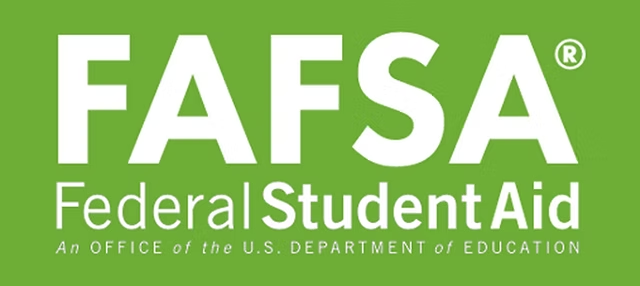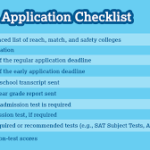The Free Application for Federal Student Aid (FAFSA) is your key to unlocking financial help for college or career school. Whether you’re a high school senior, a returning student, or a parent helping your child, understanding the FAFSA is essential to accessing grants, scholarships, work-study programs, and federal student loans. This guide will walk you through everything you need to know about the FAFSA, from how it works to tips for getting the most financial aid possible.
What is the FAFSA?

The FAFSA is a free form that students in the U.S. fill out to apply for federal financial aid for higher education. It’s also used by many states, colleges, and private scholarship programs to determine eligibility for their aid programs. By submitting the FAFSA, you’re taking the first step toward securing funds to help pay for tuition, fees, books, and other educational expenses.
Why is the FAFSA Important?
- Access to Federal Aid: The FAFSA is required to qualify for federal grants, loans, and work-study programs.
- State and School Aid: Many states and colleges use FAFSA data to award their own financial aid.
- Scholarship Opportunities: Some private scholarships also require FAFSA information.
- Low-Interest Loans: Federal student loans usually have lower interest rates and better repayment terms than private loans.
What You Need to Complete the FAFSA
Before starting your FAFSA, gather the following documents and information:
- Social Security Number (SSN) or Alien Registration Number (if applicable).
- Federal Student Aid (FSA) ID: Create one at StudentAid.gov to sign your FAFSA electronically.
- Tax Information: For the 2024-2025 FAFSA, you’ll use 2022 tax returns.
- Records of Untaxed Income: Such as child support or interest income.
- Asset Information: Including savings accounts, investments, and real estate (excluding your primary home).
- List of Schools: Add every school you’re considering, even if you haven’t applied yet.
Step-by-Step Guide to Completing the FAFSA
1. Create an FSA ID
Both the student and one parent (if applicable) need an FSA ID to sign the FAFSA electronically. This serves as your legal signature and allows you to access your financial aid information.
2. Start the FAFSA Application
Go to StudentAid.gov and click “Start Here” to begin your application. The FAFSA is available starting October 1 each year.
3. Fill Out the Form
The FAFSA asks for personal, financial, and school information. Use the IRS Data Retrieval Tool (DRT) to automatically transfer your tax information, which reduces errors and speeds up the process.
4. List Your Schools
Add all the schools you’re considering, even if you haven’t applied yet. Schools use your FAFSA information to determine your financial aid package.
5. Sign and Submit
Review your application carefully, then sign and submit it using your FSA ID. You’ll receive a confirmation email once it’s processed.
6. Review Your Student Aid Report (SAR)
After submitting the FAFSA, you’ll receive a SAR summarizing your information. Review it for accuracy and make corrections if needed.
Types of Financial Aid You Can Get Through the FAFSA
1. Grants
- Pell Grant: Need-based aid for undergraduate students.
- Federal Supplemental Educational Opportunity Grant (FSEOG): Additional aid for students with exceptional financial need.
2. Work-Study Programs
Part-time jobs for students with financial need, often related to your field of study.
3. Federal Student Loans
- Direct Subsidized Loans: For undergraduates with financial need. The government pays the interest while you’re in school.
- Direct Unsubsidized Loans: For undergraduate and graduate students. Interest accrues while you’re in school.
- PLUS Loans: For graduate students or parents of undergraduates.
Tips for Maximizing Your Financial Aid
- Submit Early: The FAFSA opens on October 1 each year, and some aid is awarded on a first-come, first-served basis. Apply as early as possible.
- Be Accurate: Double-check your information to avoid delays or errors.
- Update Your FAFSA: If your financial situation changes (e.g., job loss), contact your school’s financial aid office to update your FAFSA.
- Reapply Every Year: Financial aid isn’t automatic. You must complete the FAFSA each year you’re in school.
- Explore State and School Deadlines: Some states and colleges have earlier deadlines than the federal deadline (June 30).
Common FAFSA Mistakes to Avoid
- Missing the Deadline: Late submissions can reduce your aid eligibility.
- Leaving Fields Blank: Enter “0” or “not applicable” instead of leaving fields empty.
- Using the Wrong Tax Year: For the 2024-2025 FAFSA, use 2022 tax information.
- Not Signing the Form: Both the student and parent (if applicable) must sign the FAFSA.
Final Thoughts
The FAFSA is a powerful tool that can help make college more affordable. By understanding how it works and submitting it on time, you can unlock grants, scholarships, work-study opportunities, and low-interest loans. Don’t let the process intimidate you—take it step by step, and remember that help is available through your school’s financial aid office or the Federal Student Aid website.
Start your FAFSA today and take the first step toward funding your education!
“Learn everything about the FAFSA, from how to apply to maximizing financial aid. Discover tips, deadlines, and types of aid available to fund your education.”











